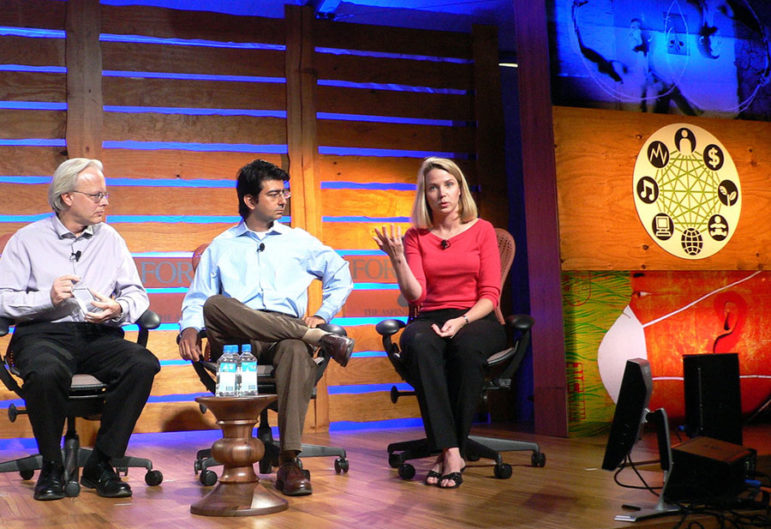
A new report prepared by the Omidyar Network suggests that impact investing can be done well along a continuum with fully commercial investments on one end and charitable gifts on the other.
The report is based on analysis of more than $1 billion invested in a combination of for-profit and nonprofits over the last 12 years. The result of the two-year-long analysis is what the report’s writers call a “framework for investors across the returns continuum.” In other words, how do you decide how much return you want and how much good you want your money to do? All kinds of business forms were evaluated, with high-growth venture capital forays on one side of the continuum and grants to nonprofits on the other side. When it comes to social impact and results, which is better—grants or investments? Is there a tradeoff? The Omidyar Network says, “It depends.”
That answer’s not as fuzzy as it sounds. The report offers specifics on how to carefully structure decision-making and includes numerous examples.
The impact investing field, in our view, must move beyond the unproductive debate over trade-offs and instead focus on a more relevant question: Under what conditions should an investor accept a risk-adjusted below-market return in exchange for an opportunity to achieve social impact?
Accepting lower financial returns in exchange for greater social impact is worth it, the report says, but there are other good options, too:
Asking whether impact investing does or does not require an impact-for-return trade-off presents investors with a false choice. Focusing on that question not only keeps willing capital on the sidelines; it also prevents investors from developing realistic frameworks by which to measure success on both the impact front and the financial front. To move past that false choice, impact investors must recognize that returns exist along a continuum—and that both direct impact and market-level impact should figure in their evaluation of potential investments.
The report divides companies into three categories: A, B, & C. The categories are defined by expected return and expected social impact. “B” and “C” are investments in which one expects lower or subcommercial returns but have a compelling case for market impact. “In other words, the greater the financial ‘concession,’ the more compelling the expected market impact needs to be,” say Omidyar team members.
Sign up for our free newsletters
Subscribe to NPQ's newsletters to have our top stories delivered directly to your inbox.
By signing up, you agree to our privacy policy and terms of use, and to receive messages from NPQ and our partners.
“A” companies are typical venture capital darlings; they have the potential for impact, getting really big, and making a lot of money. “C” category investments include grants and groups from which a high level of impact is expected but little or no financial return. However, it’s the “B” category groups—subcommercial, or investments that the prospect of lower returns in exchanged for significant market impact—that may actually have the most positive effects on society.
The impact of a firm can extend well beyond its direct effect on customers. Indeed, even firms that achieve only modest financial success can have a considerable impact by accelerating the development of a market that reaches an underserved or disadvantaged population. This kind of market-level impact has become the main criterion against which we judge investments that have a subcommercial profile.
In the “B” category, for example, Omidyar invested in MicroEnsure, a company that provides insurance to low-income families in Africa and Asia. The social benefit of micro-insurance, the project asserts, is financial stability for growing numbers of low-income families and small businesses; if these businesses succeed, they can help build a market. Today, MicroEnsure has more than 40 million customers in 20 countries, and its success has inspired new entries into the micro-insurance market, including Bima and Inclusivity Solutions. Does micro-insurance make a difference? Initial research suggests that in developing countries, the impact can be quite positive in terms of helping and protecting poor households.
Omidyar is quick to admit that describing an investment framework is easier than putting it to work in the complexities of the real world. They found that:
- Predicting social impact was more difficult than predicting financial return, since impact depends upon so many eternal actors.
- Comparing actual impact with expected impact is difficult, but developing baseline expectations can help compare assess actual impact.
- There is a big difference between initial expectations and performance over time. Some category B investments far outperformed category A companies, making it hard to predict overall portfolio performance.
- Lazy investing is a potential hazard when market impact rationales are used to justify what is actually a poorly run business.
Who Should Invest?
Investing for impact does not require a tradeoff of impact for return; that’s a false choice, according to the report. While the report focuses on the work of a large fund, there are lessons that investors of differing sizes could take from their experiences and apply to local or regional efforts in their home communities. So long as the terms used to talk about this kind of work continue to evolve in meaning, are used inconsistently, and, in some cases, are narrowly defined by IRS regulations, discussion can become cumbersome quickly. The report helps frame things more clearly, and their chart of A, B, and C categories may help clarify new opportunities.
The report writers identify two groups that are particularly well suited to make large-scale investments now. Ultra-high-net-worth individuals, defined as those who control more than $30 million of investable assets, control 12 percent of global wealth; accordingly, they have an immense opportunity. The report encourages them “to reject the false dichotomy that separates philanthropy from investing—and to consider opportunities to achieve social impact.” Similarly, foundations have tremendous opportunity, but despite lots of talk at conferences “less than two percent of $55 billion deployed by foundations went into investments rather than grants, and an even smaller portion of that sum—less than one half of one percent—went into equity based investments.”
The question is no longer “Grants or investments?” Instead, the conversation is, for Omidyar, one about how best to do optimal social good. Foundations and other large funds are asked to put their money to work instead of warehousing funds or passive investing, some of which contributes to the very issues some donors and foundations are trying to fix or avoid.













